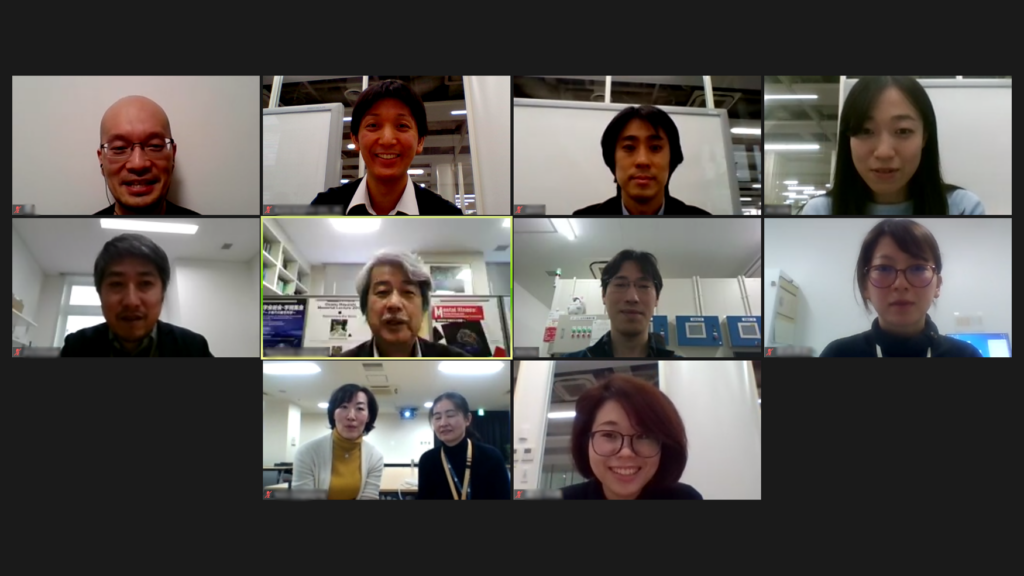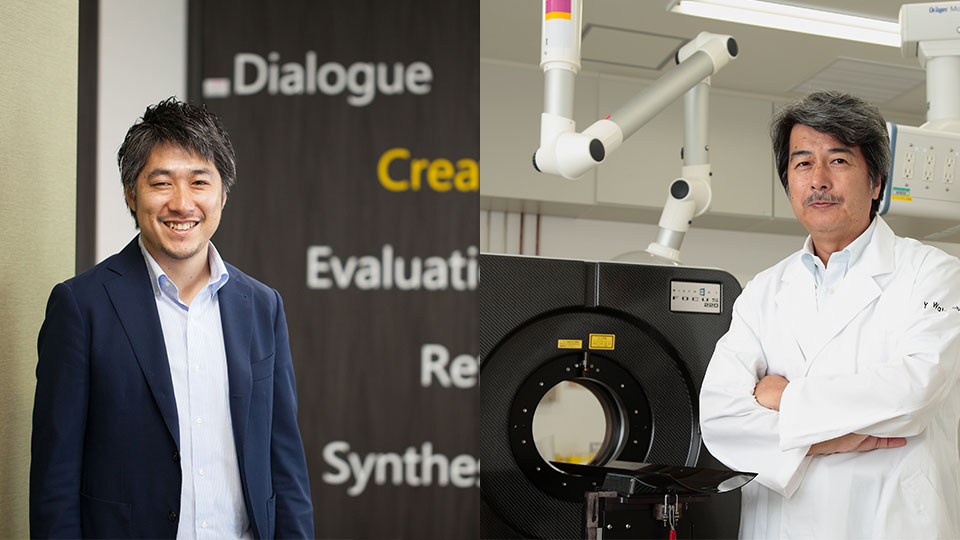RIKEN BDR-DAIKIN Collaboration Center
At the RIKEN BDR-DAIKIN Collaboration Center, one of two collaboration centers established at BDR with a partnering company, BDR scientists researching human fatigue and Daikin Industries, Ltd., a global manufacturer of air conditioning systems, have teamed up to share and exchange their respective knowledge and technologies with the goal of creating an “anti-fatigue” environment—a healthy and comfortable environment that can reduce or prevent fatigue in people. We talked to unit leaders Kei Mizuno (Laboratory for Health Estimation, left in the top image) and Yasuyoshi Watanabe (Laboratory for Health Solutions; concurrently director of BDR-DAIKIN Collaboration Center, right in the top image) who lead the two laboratories of the BDR-DAIKIN Collaboration Center to hear more about their research activities.
What kinds of activities are being conducted under this Collaboration Center?
In our efforts to create an “anti-fatigue” environment, we are first looking into the relationship between different environmental factors, such as temperature and humidity, and human fatigue. For example, we often move between areas with large environmental differences in our daily lives, which can place a burden on our autonomic nervous system (physiological functions) as the body adapts to the environmental changes, thereby contributing to fatigue. In recent years, the Japanese government has been encouraging governmental organizations and companies to set their office air conditioning temperatures at 28ºC during the hot, humid months of summer to conserve energy. Although this may help to reduce energy consumption, people may feel discomfort due to humidity and this, in turn, may result in the decline of work efficiency and increased fatigue. Many studies to date have only evaluated the effects of temperature and humidity based on subjective measures such as comfort. But in our studies, we focused on clarifying the effects of these environmental factors on health and fatigue by including analyses of quantitative measurements of autonomic nervous system activity and work efficiency in addition to psychological evaluations.
Can you explain how the studies are carried out?
A special research facility with four rooms, in which the temperature and humidity settings in each room can be finely controlled in increments of 0.1ºC for temperature and 1% for humidity, was built in the RIKEN Integrated Innovation Building (IIB) in Kobe. For example, in tests for gauging ideal workplace conditions in summer to reduce fatigue while maintaining work efficiency, we first selected 12 different combinations of temperature and humidity settings. The study volunteers were then asked to carry out tasks requiring concentration under six randomly assigned conditions and we evaluated their work efficiency for completing the tasks, measured their health parameters, such as changes in heart rate variability to calculate autonomic nerve activities, using monitoring devices worn by volunteers under each condition, and collected questionnaires after each test condition. Comprehensive analyses of these data indicated that in room temperature settings at 28ºC, lowering humidity (under 40%) was effective for reducing fatigue levels. These findings and others were reported in a media release from DAIKIN in May 2020*1.

In future studies, we plan to examine other environmental factors such as how airflow or odors (aroma) may affect human health, including fatigue.
How has the COVID-19 pandemic affected the studies that rely on cooperation from volunteers?
We did experience some disruptions to our research plans. The declaration of a state of emergency in early April led to many restrictions on research activities at RIKEN. The experiments we had planned to start right after Golden Week in early May had to be postponed, and it was only in September that we were finally able to start. To get the green light for our research, we had many discussions with the RIKEN Research Ethics Committee and the Crisis Management Headquarters to ensure adequate COVID-19 prevention measures were in place and modified the experimental procedures accordingly. We also limited the number of people who could participate in one day, meaning that it has taken us longer to gather all of the data needed for our study. But thanks to the hard work of both BDR and DAIKIN researchers, we are still managing to proceed with our plans.
This pandemic has drastically changed our lives within a short time, and we have seen a growing interest in air quality and ventilation in enclosed spaces as one measure for reducing transmission of COVID-19. In the future, when devising solutions for creating a space that helps people feel less fatigue, it will also be necessary to consider how anti-viral solutions can be integrated to also create a healthy environment.
What is important for you when collaborating with DAIKIN?
It’s important for us that the collaboration does not end up being like commissioned research. Whenever possible, we have our research collaborators at DAIKIN actually come to our labs and conduct research here, and in doing so, learn and experience firsthand about how research is carried out in our labs as well as RIKEN in general. The collaborating researchers from partnering companies can benefit by developing new skills through their experiences at RIKEN which in turn will become an asset for their company in the long run.

*1 Media release from DAIKIN (in Japanese) “Lowering humidity is effective in reducing fatigue even at room temperature of 28ºC”
